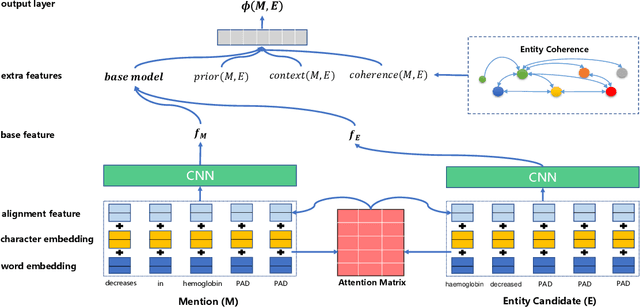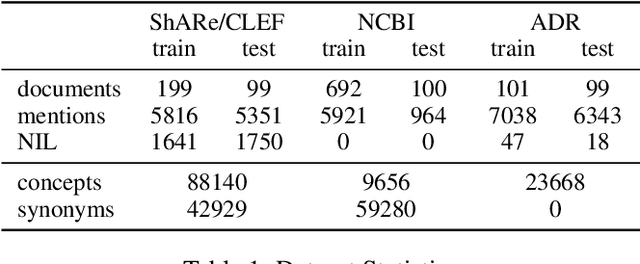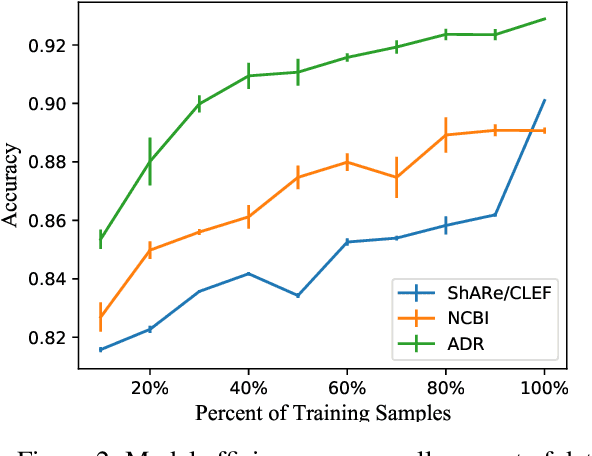A Lightweight Neural Model for Biomedical Entity Linking
Paper and Code
Dec 16, 2020



Biomedical entity linking aims to map biomedical mentions, such as diseases and drugs, to standard entities in a given knowledge base. The specific challenge in this context is that the same biomedical entity can have a wide range of names, including synonyms, morphological variations, and names with different word orderings. Recently, BERT-based methods have advanced the state-of-the-art by allowing for rich representations of word sequences. However, they often have hundreds of millions of parameters and require heavy computing resources, which limits their applications in resource-limited scenarios. Here, we propose a lightweight neural method for biomedical entity linking, which needs just a fraction of the parameters of a BERT model and much less computing resources. Our method uses a simple alignment layer with attention mechanisms to capture the variations between mention and entity names. Yet, we show that our model is competitive with previous work on standard evaluation benchmarks.
 Add to Chrome
Add to Chrome Add to Firefox
Add to Firefox Add to Edge
Add to Edge